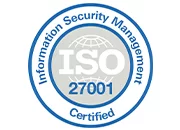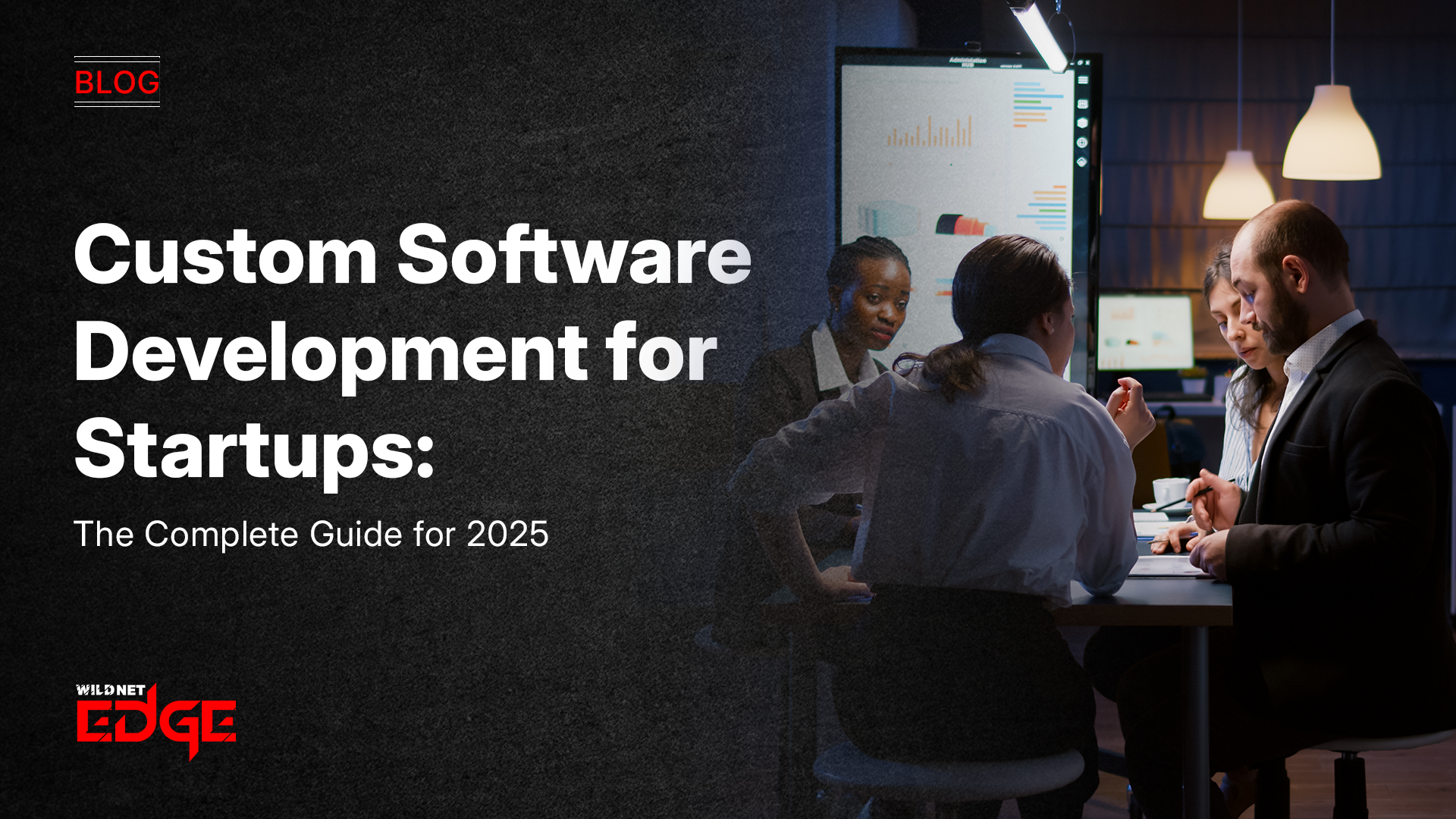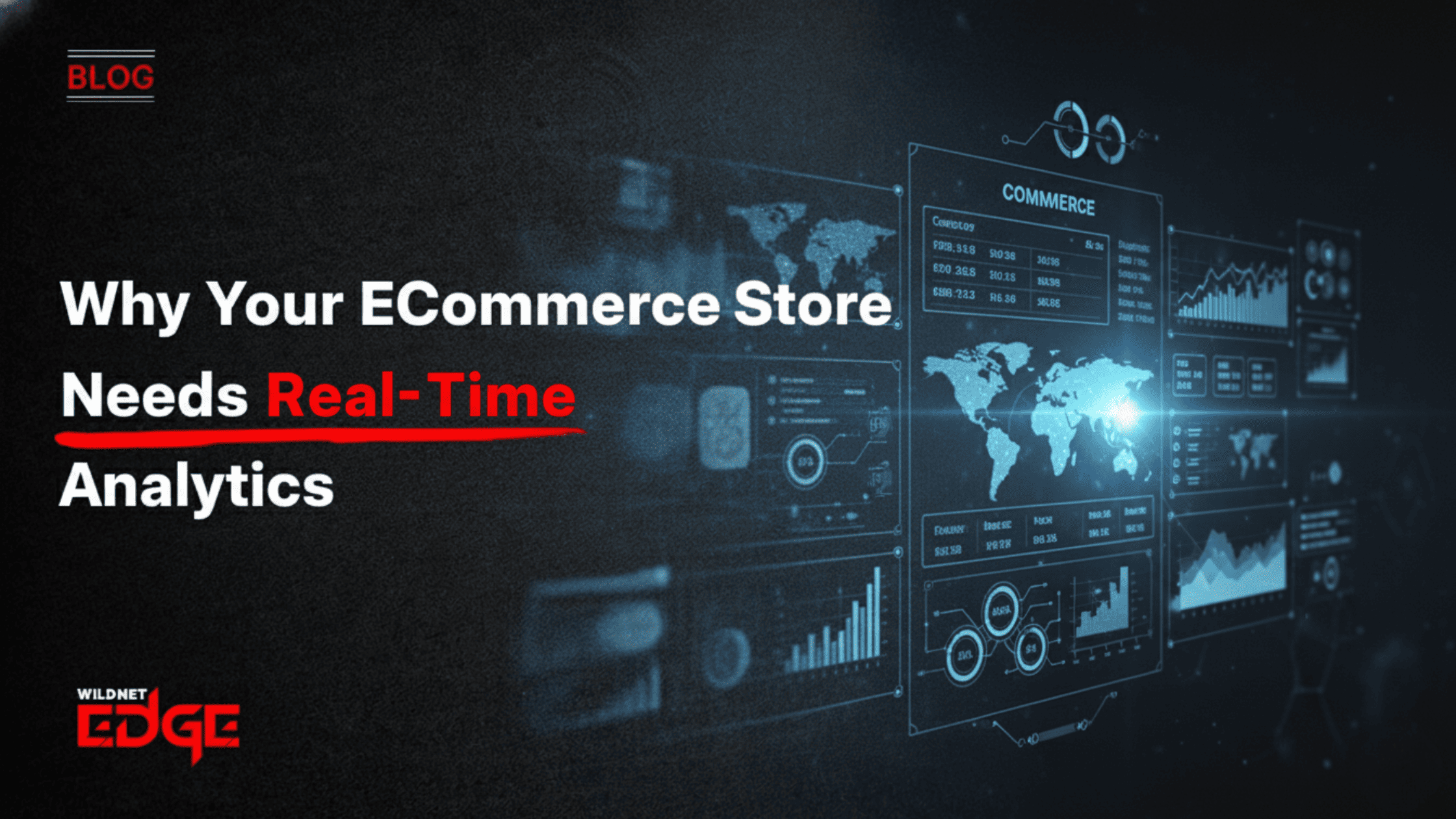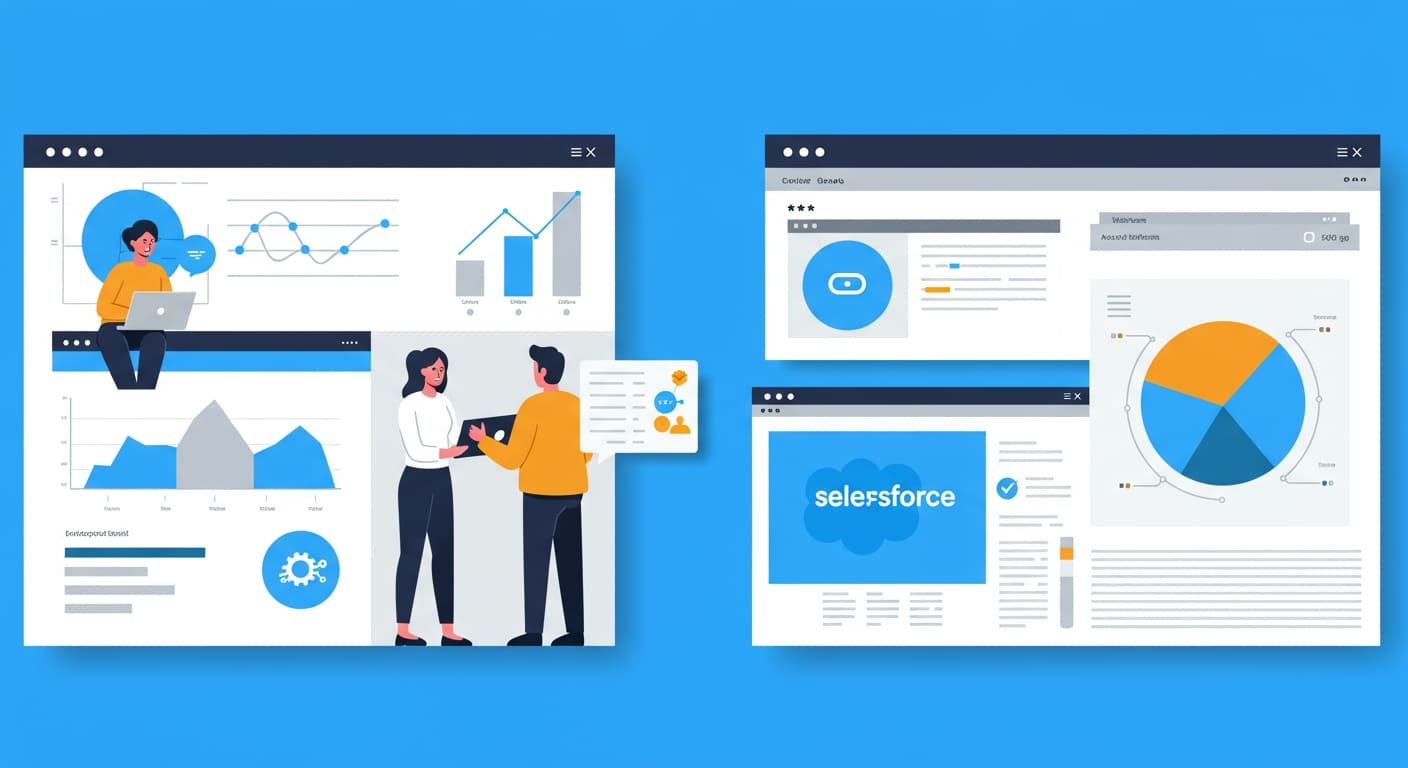In 2025, speed, flexibility, and control aren’t just startup advantages; they’re survival traits. Off-the-shelf tools may get you up and running fast, but they rarely support the long-term vision of a high-growth startup. That’s why more founders are turning to custom software development for startups as a core part of their product strategy.
Instead of forcing your business to adapt to generic tools, custom software allows you to build exactly what you need, from an MVP to a scale-ready platform. It’s not just about adding features. It’s about solving the right problems with the right technology, on your own terms.
Whether you’re launching something new, streamlining operations, or trying to stand out in a crowded space, this guide breaks down everything you need to know about custom software development in 2025, how it works, why it matters, what it costs, and how to do it right.
What Is Custom Software Development?
Custom software development is the process of building software that’s made for one specific business, not the market at large. Instead of buying a generic tool and adapting your work to fit it, you start with your exact requirements and build technology around them.
This approach covers everything from internal dashboards to customer-facing platforms, mobile apps, enterprise systems, and industry-specific tools. It’s not about adding flashy features; it’s about solving real business problems with purpose-built technology.
For startups, this includes:
- MVPs with core features built for speed and validation
- Internal dashboards to manage operations
- Scalable cloud-native architectures
- Apps with unique UX and user flows
- API integrations with other services you depend on
For startups, custom software isn’t about adding features but building leverage.
Custom Software vs. Off-the-Shelf: A Quick Comparison
| Feature | Custom Software | Off-the-Shelf Software |
| Fit for Business Needs | Tailored | General-purpose |
| Scalability | Built to scale | Often limited |
| Cost | Higher upfront, better long-term ROI | Lower initial cost |
| Time to Deploy | Longer (built from scratch) | Faster (ready to use) |
| Ownership | Full control and IP rights | Licensing restrictions |
| Integration | Designed for your systems | May need workarounds |
Why Startups Are Custom Software Development in 2025
Startups in 2025 don’t just need to move fast; they need to build smart. Off-the-shelf tools often box startups into workflows that don’t reflect their evolving needs. That’s why custom software development for startups is gaining momentum.
Here’s why more founders are opting for custom builds:
- Unique Value Propositions: Startups often introduce new products or business models. Custom software helps them support that uniqueness, not compromise it.
- Fast Iteration Cycles: Agile custom development allows startups to test, refine, and relaunch features quickly, a critical edge in competitive markets.
- Investor Confidence: Purpose-built tech shows maturity and vision, making it easier to attract funding and demonstrate technical differentiation.
- Seamless Scaling: Custom-built apps are designed to grow with user demand, from MVP to enterprise-grade platforms.
If you’re building something the world hasn’t seen before, custom development gives you full control to shape the user experience, integrate the right tech stack, and scale without replatforming later.
When Does Your Startup Need Custom Software?
Not every startup needs to build from scratch on day one, but there’s a tipping point where generic tools become a bottleneck. Here’s when custom software makes sense:
- You’re building a product no one else has
- You need to control the user experience end-to-end
- You’re handling sensitive or regulated data
- You want to scale quickly without hitting platform limits
- You need to integrate multiple systems or APIs
- You’re tired of workarounds and plugin hacks
Custom software gives you full ownership, technical freedom, and a competitive edge, all critical advantages in the early stages of growth.
Benefits of Custom Software Development for Startups
In the early stages of a startup, every decision impacts your runway. Custom software may seem like a bigger upfront investment than ready-made tools, but the long-term benefits outweigh the initial cost — especially if you’re building something innovative or operationally complex.
1. Product-Market Fit, Faster
Custom development allows you to focus only on what your users need. No bloated features, no forced workflows. Just a lean, purpose-built tool designed to get you to validation faster.
2. Total Flexibility
As a startup, your product will evolve rapidly. Custom software gives you full control over updates, pivots, and experiments. You’re not stuck waiting for a vendor to roll out features or remove blockers.
3. Competitive Differentiation
With off-the-shelf platforms, you get the same functionality your competitors have. With custom software, you build around your own value proposition — UX, automation, performance, and integrations that make your product stand out.
4. Better Scalability
You’re not just building for now. Custom applications can scale with your user base, your team, and your roadmap. You won’t need to replatform six months in.
5. Improved Security and Compliance
Startups working in regulated industries (like healthtech or fintech) need strict data handling, encryption, and compliance built in from day one. Custom software makes this possible.
How to Approach the Custom Software Development Process
While the overall development lifecycle is similar across industries, startups tend to move faster, test more aggressively, and change direction more often.
Here’s how a typical custom software development process for startups looks in 2025:
1. Discovery & Strategy
You don’t start with features, you start with goals. This phase focuses on:
- Understanding your business model and user flows
- Mapping out the MVP scope
- Defining success metrics
- Identifying technical constraints
Startups often work with product strategists or CTO-level consultants during this stage to make sure they’re solving the right problems before investing in code.
2. Lean Technical Planning
Instead of building a 12-month roadmap, the planning phase breaks things into short-term, testable milestones. Expect:
- Choice of lightweight tech stack
- Scalable cloud-native infrastructure
- API-first thinking for future integrations
- Modular architecture for fast iterations
3. UI/UX for Validation
User experience isn’t just about pretty interfaces; it’s about learning fast. Startups use wireframes and clickable prototypes to:
- Test with real users early
- Gather feedback before development
- Optimize flows that drive sign-ups, engagement, or conversions
4. Agile Development (MVP-first)
Sprints are short. Releases are fast. The MVP might be built in 4–12 weeks, depending on complexity. Agile helps startups:
- Prioritize “must-haves” over “nice-to-haves”
- Stay lean and pivot based on feedback
- Deploy fast and improve in real time
5. Built-in Testing and QA
Startup teams don’t always have dedicated QA engineers, but modern development integrates testing at every stage:
- Unit and integration tests
- Automated CI/CD pipelines
- Real-world performance testing (even for MVPs)
6. Launch, Iterate, Scale
The goal isn’t just to launch, it’s to launch fast and learn. Post-launch, your software should:
- Support analytics to guide next features
- Allow safe, staged rollouts
- Be easy to update, expand, or scale without rewrites
Common Pitfalls and How You Can Avoid Them
Even the best ideas can fail if the software build goes off track. Here are six common challenges in custom software development for startups, and how to stay ahead of them:
1. Overbuilding the MVP
Many startups try to launch with every possible feature, and burn cash doing it.
Solution: Ruthlessly prioritize. Launch with a functional, testable core and save advanced features for post-validation.
2. Skipping Discovery
Jumping straight to coding without a proper strategy often leads to poor UX or product misalignment.
Solution: Always begin with stakeholder interviews, workflow mapping, and tech assessments, even for a fast build.
3. Choosing the Wrong Tech Stack
Founders sometimes pick tools that aren’t scalable, maintainable, or familiar to the dev team.
Solution: Use proven, startup-friendly tech that aligns with your growth goals and talent pool.
4. Ignoring Documentation
In a rush to build, teams skip documentation. But undocumented code is hard to maintain or scale.
Solution: Ask your development partner to document the system as they build. You’ll thank them later.
5. No Post-Launch Plan
If no one’s monitoring performance, usage, or bugs after launch, your product can degrade quickly.
Solution: Budget time and resources for post-launch support, updates, and user feedback loops.
6. Poor Communication with Dev Team
Lack of visibility into development creates confusion, missed deadlines, and misaligned priorities.
Solution: Work with a team that uses transparent project management tools and shares updates regularly.
Custom Software Development Costs for Startups in 2025
The key is understanding what you’re paying for, what to prioritize, and how to build smart.
There’s no one-size-fits-all pricing for custom software development for startups. Your costs depend on:
- The complexity of your MVP
- Number of features and user roles
- Design and UX requirements
- API integrations or third-party services
- Your tech stack
- Where your development team is located (onshore, offshore, hybrid)
Here’s a realistic cost breakdown based on 2025 estimates:
Startup-Friendly Custom Software Cost Breakdown (2025)
| Component | Description | Typical Cost Range (USD) |
| MVP Strategy & Planning | Product definition, tech consulting, architecture design | $2,000 – $10,000 |
| UI/UX Design | Wireframes, user flows, responsive design | $3,000 – $15,000 |
| Frontend Development | Web or mobile app interfaces | $5,000 – $40,000 |
| Backend Development | APIs, business logic, authentication, data handling | $8,000 – $50,000 |
| Integrations | Payment gateways, CRMs, third-party tools | $2,000 – $20,000 (per system) |
| Testing & QA | Manual and automated testing | $3,000 – $15,000 |
| Cloud Setup | Hosting, CI/CD, monitoring (AWS, GCP, Azure) | $2,000 – $10,000 |
| Post-Launch Support | Monthly updates, bug fixes, optimization | $1,000 – $5,000/month |
How to Choose the Right Custom Software Development Partner
Picking the right team is one of the most critical steps in custom software development. A bad decision here costs time, money, and trust.
Here’s what to look for:
1. Proven Experience With Custom Projects
Look for a partner that builds full-scale custom software, not just websites or quick apps. Ask for examples of projects similar in size, complexity, or industry. Review their case studies and talk to past clients if possible.
2. Clear Technical Capabilities
Check if they’re skilled in modern tech stacks that suit your project. This includes:
- Backend (e.g., Node.js, .NET, Python)
- Frontend (e.g., React, Angular, Vue)
- Mobile (e.g., Kotlin, Swift, Flutter)
- Cloud (e.g., AWS, Azure, GCP)
- Database, APIs, DevOps, and testing tools
You don’t want a team learning your tech stack on the job.
3. Strong Communication and Project Management
Custom projects evolve. You need a partner who can:
- Communicate frequently and clearly
- Share progress with demos or sprint reviews
- Log decisions and document the build
- Adjust plans based on feedback
If they can’t walk you through their delivery model, move on.
4. Ability to Understand Your Business
Tech skills are important, but not enough. Your partner should understand how your business works or be willing to dig deep into it. Look for teams that ask thoughtful questions and challenge vague requirements.
5. Post-Launch Support and Ownership
A good partner sticks around. Make sure they offer:
- Maintenance plans
- Update cycles
- Bug handling
- Ownership transfer if needed
Clarify who owns the code and how handoffs work if you part ways.
6. Transparent Pricing and Timelines
You’re not just buying hours, you’re buying outcomes. Avoid vague quotes or padded timelines. Ask for:
- Fixed vs time-based pricing models
- What’s included (and not)
- Timeline breakdown by phase
- Milestone payment structure
If the scope feels unclear, press for better documentation before signing anything.
Why Custom Software Is a Strategic Move for Startups
Startups live and die by their ability to move fast, solve problems uniquely, and scale at the right moment. Off-the-shelf software might feel like the quicker, cheaper path, but it often turns into a patchwork of tools that limit your product, slow your team, and confuse your users.
Custom software development for startups isn’t just about writing code. It’s about owning your roadmap, building exactly what your business needs, and setting a technical foundation that can evolve as fast as your ideas do.
If you’re building something new, different, or disruptive, don’t build it on someone else’s assumptions. Build it your way.
Ready to Build Custom Software That Moves as Fast as You Do?
At WildnetEdge, we specialize in custom software development for startups, from MVPs to scale-ready platforms. Whether you’re still validating your idea or planning for rapid growth, our team can help you design, build, and launch with confidence.
Let’s talk about your next big move.
FAQs: Custom Software Development for Startups
1. Do all startups need custom software?
Not always. If your operations are simple and off-the-shelf tools cover your needs, there’s no harm in using them. But if you’re building a unique product, need tighter control, or plan to scale fast, custom software gives you a competitive edge early.
2. How long does it take to build custom software for a startup?
It depends on complexity. A basic MVP can be built in 6–12 weeks. More advanced platforms may take 4–6 months. The key is to launch lean and iterate based on real feedback.
3. Is custom software too expensive for early-stage startups?
Not necessarily. A focused MVP with only essential features can be affordable and effective. Costs rise with complexity, but smart planning, open-source tools, and agile development keep budgets under control.
4. What’s the biggest risk when building custom software as a startup?
Scope creep and poor planning. Many startups try to build too much, too soon. The solution: start with a clear, validated idea, prioritize core features, and work with a partner that understands startup speed and constraints.
5. Can custom software scale as my startup grows?
Absolutely. In fact, that’s one of its biggest advantages. Custom systems can be designed to support more users, features, and integrations without needing a total rebuild.

Nitin Agarwal is a veteran in custom software development. He is fascinated by how software can turn ideas into real-world solutions. With extensive experience designing scalable and efficient systems, he focuses on creating software that delivers tangible results. Nitin enjoys exploring emerging technologies, taking on challenging projects, and mentoring teams to bring ideas to life. He believes that good software is not just about code; it’s about understanding problems and creating value for users. For him, great software combines thoughtful design, clever engineering, and a clear understanding of the problems it’s meant to solve.
 sales@wildnetedge.com
sales@wildnetedge.com +1 (212) 901 8616
+1 (212) 901 8616 +1 (437) 225-7733
+1 (437) 225-7733















 ChatGPT Development & Enablement
ChatGPT Development & Enablement Hire AI & ChatGPT Experts
Hire AI & ChatGPT Experts ChatGPT Apps by Industry
ChatGPT Apps by Industry ChatGPT Blog
ChatGPT Blog ChatGPT Case study
ChatGPT Case study















